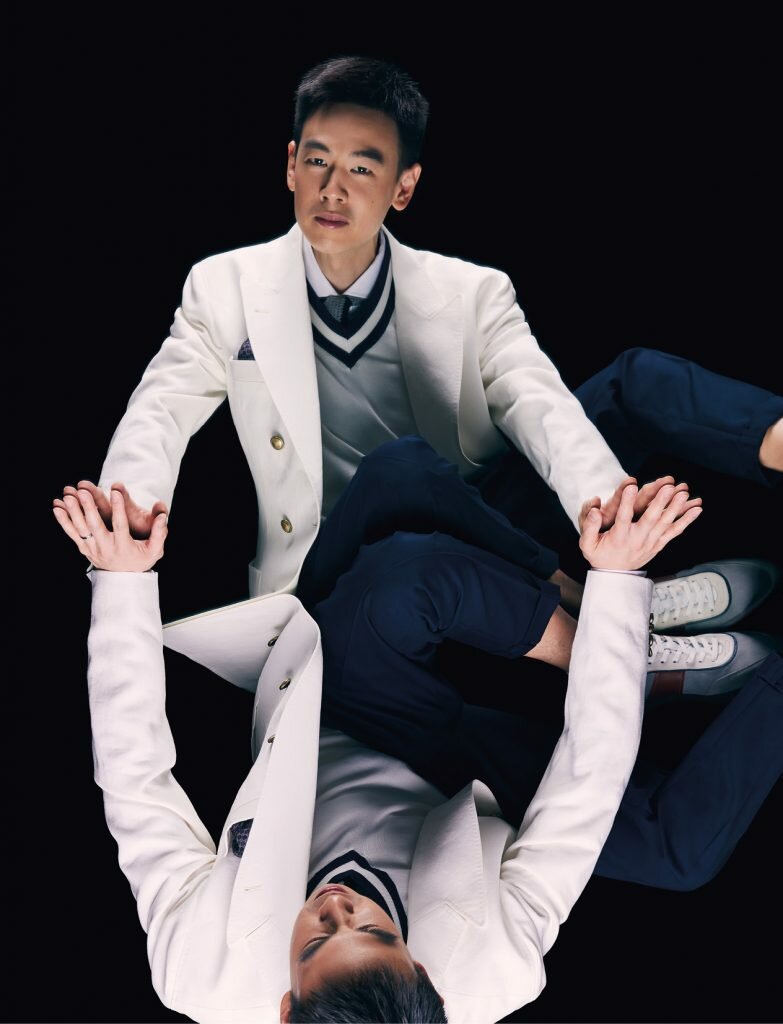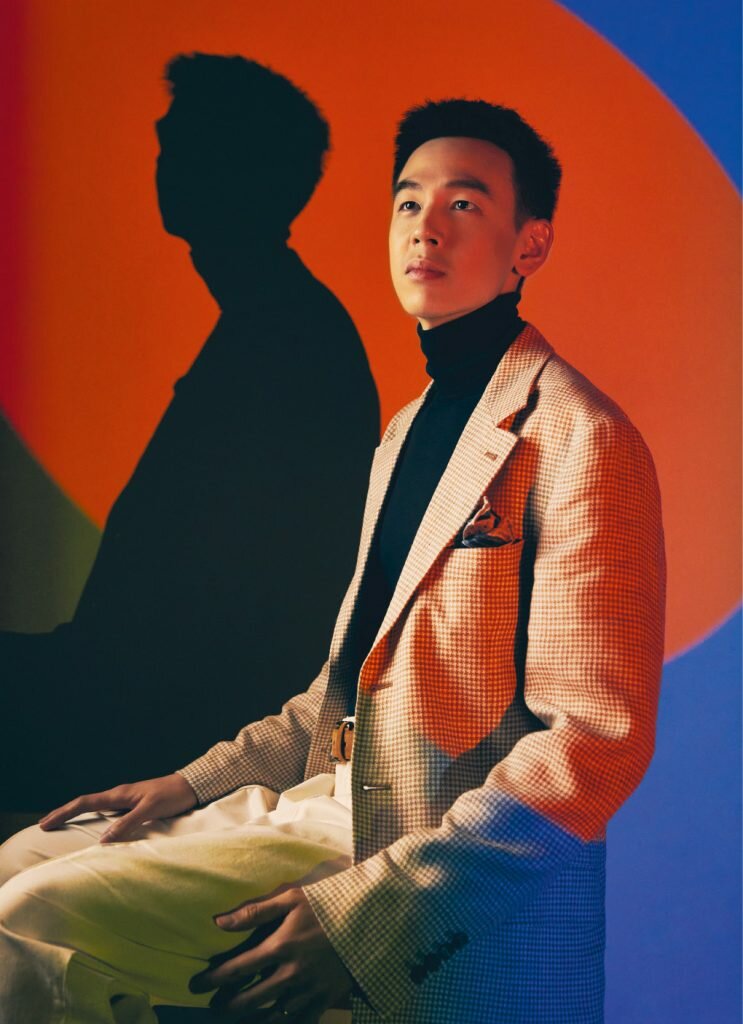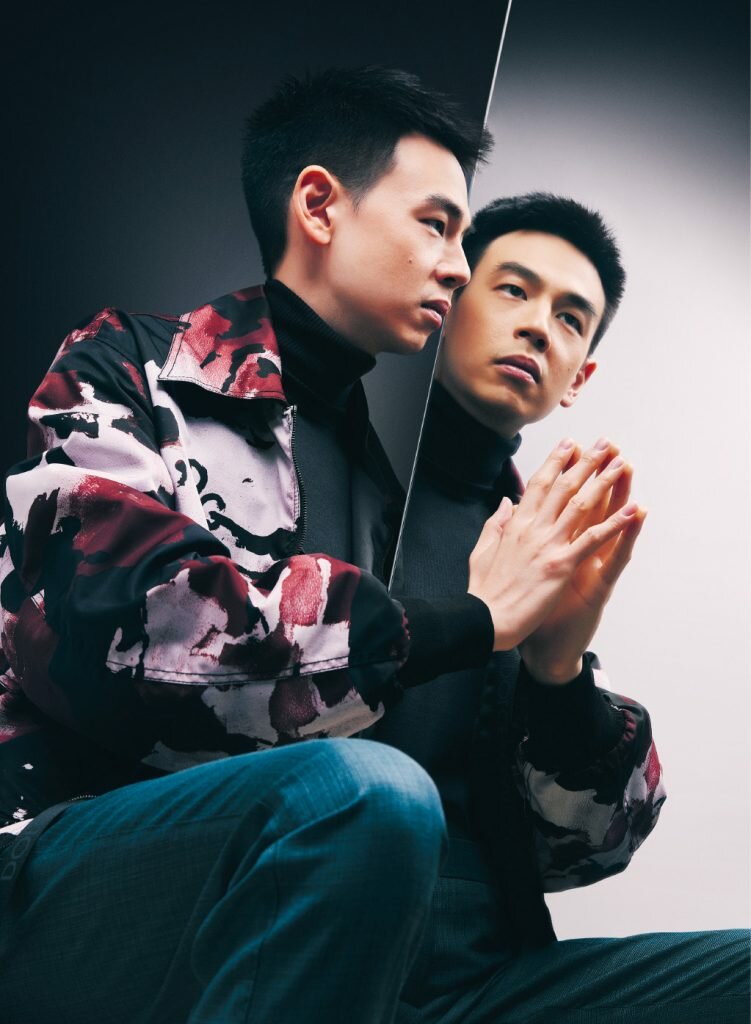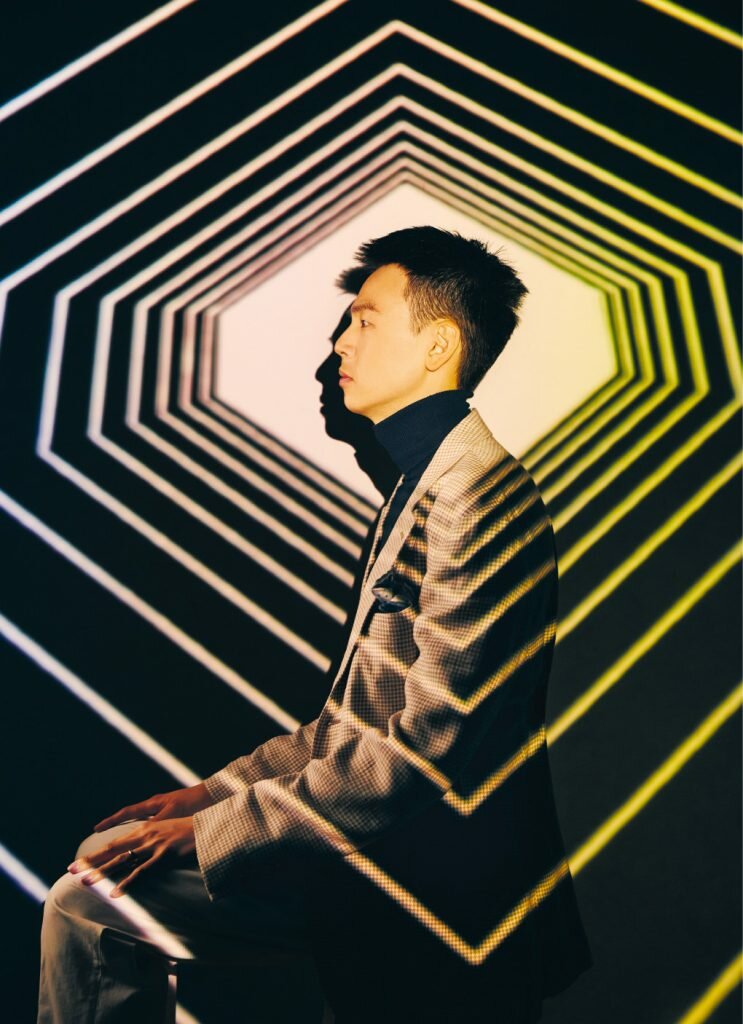“I guess Star Wars was where it really started,” admits a slightly sheepish-sounding Jonathan Hung. “It really first inspired me to look towards the stars.”
As executive chairman of Singapore Space and Technology Ltd (SSTL), he has played a major role in turning what was previously science fiction into fact, helping establish Singapore as a regional hub for space start-ups.
“We wanted Singapore to become a serious contributor to the global space industry,” says the 38-year-old, when asked what he hoped to achieve when he founded SSTL (then known as the Singapore Space and Technology Association) back in 2007.
It was a bold vision. At the time, space was still the domain of government agencies in bigger nations like the US, Russia and Japan and, aside from a few researchers studying satellite technology at universities, the chance of a job in the space industry in Singapore was as remote as landing on Saturn.
Fast forward 13 years and it seems everyone wants in on the new race for space. In 2019, the global space economy exceeded US$423 billion ($563 billion), while a 2020 Morgan Stanley report estimated the industry could be worth up to US$1.1 trillion by 2040.
Linen jacket, cotton knit vest, cotton shirt, silk cotton knit tie, linen blend pocket square and wool blend trousers, all from Brunello Cucinelli; suede shoes, from Tod’s
Closer to home, it looks like the organisation’s hard work and vision is starting to bear fruit. SSTL now has 25 start-ups signed to the space-based accelerator programme it launched in February 2020 — evidence that Singapore is beginning to make some serious strides in the space industry.
What’s more, these companies are starting to attract global interest. Even in the midst of Covid-19, 2020 saw a number of local start-ups receive significant funding. In November, Zero Error Systems (ZES), which developed a smart chip that protects satellites from radiation damage, raised US$1.85 million in seed funding from investors.
And last July, Transcelestial, one of the first local companies to work with SSTL, raised US$9.6 million in Series A funding for technology that aims to use satellites and lasers to deliver high-speed internet connectivity.
“We might not be a space-faring nation, but we now have some degree of expertise and confidence to play a part in a future moon shot,” says Hung with pride. “There are companies here with the potential to make a global impact.”
It’s certainly not been an easy path, given that the engineering graduate was literally building an industry from scratch in a country which didn’t (and still doesn’t) have its own space agency and lacked the physical room to launch a rocket. Chatting with Hung at the SSTL office, surrounded by space memorabilia, it’s clear that beneath his easy-going demeanour lies a resilient and gutsy individual — character traits he shares with his favourite Star Wars character.
“I’ve always looked up to Han Solo; his only special power is his wits, guts and wry humour, he gets things done even when the odds are stacked against him,” says Hung, who adds that facing bad odds is something that definitely resonates with SSTL.
But despite the Star Wars connection, Hung admits he had always planned on a career in the aviation industry until his choice of university set him on a different trajectory. Attracted by its aerospace focus, he enrolled in Embry-Riddle Aeronautical University in Florida, which just happens to be located 80km from NASA’s Kennedy Space Center.
Silk linen jacket, silk pocket square, cotton pants and suede belt, all from Brunello Cucinelli; baby cashmere polo neck knit, from Loro Piana
In an environment he describes as being a bit like Top Gun, with students flying into the college’s private runway for lessons, he found himself rubbing shoulders with wannabe astronauts, civilian pilots and military cadets on a course where 50 percent of lectures were related to space.
“It really crafted my DNA and shaped who I became,” he recalls of those four years. “It turned my interest in space into something more serious and focused.”
He credits his national service with the Singapore Armed Forces’ 1st Commando Battalion for equipping him with the mental strength to deal with the rigours of the military-leaning college, and clearly took inspiration from his instructors, many of whom were former test pilots and combat veterans.
“These guys were the real deal, they risked life and limb to be the best of the best,” remembers Hung, who ended up helping the University set up a campus in Singapore in 2011. “They taught me it’s all about finding a way to bring the plane back safely and that sometimes means reinventing the rules.”
In many ways, it was a desire to break boundaries that led him to found SSTL. Upon returning to Singapore in 2006, he took on a job with the Economic Development Board (EDB), where he oversaw the maritime and aerospace sectors. Yet, he remained determined to make a difference.
“I just wanted to create something new,” he explains of the decision to set up the association in his spare time. “I saw that we [Singapore] were strong in aviation but had nothing space-related, so I thought ‘why not’?”
Fortunately, his bosses gave him the freedom to “pursue his dream”, as long as it didn’t interfere with his day job. He was doubly fortunate to find a colleague in Lynette Tan — a colleague who would become his wife, the mother of their two children and the chief executive of SSTL — who was just as willing to put in the hard work and effort needed to get the association off the ground.
“You could say our romance was forged from the fire of fighting together in the trenches,” says Hung with a big grin, when recalling the early days of SSTL and their blossoming relationship.
Nylon bomber jacket and wool trousers, both from Dolce & Gabbana; baby cashmere polo neck knit, from Loro Piana
Starting from ground zero, Tan and Hung realised their first goal was to get the idea of space into people’s heads. Seeing education as “low-hanging fruit”, they decided to target schools and colleges through the launch of the Singapore Space Challenge in 2007.
Now an annual event, the SSC invites teams of 15- to 25-year-olds to take on a specific space-related challenge. The first challenge saw 60 local entries. The 2020 edition, to design a viable solution to the problem of space junk, saw over 600 individuals from around the world competing for the top prize of $10,000.
Building on that educational base, they have also created their own version of NASA’s space camp, a fun course aimed at getting students to utilise their STEM skills and apply them to real-life space problems put to them by industry experts.
“It’s a circular experience: it inspires the kids and shows them, and their parents, that space is actually a potential career, but it also lets the experts put their theories into practice,” explains Hung, who has seen former space academy alumni come back to intern at SSTL.
The father of a seven-year-old son and a nine-year-old daughter, he looks to instil that same spark in his own children through the toys they play with and the programmes they watch on TV. He jokes that his kids think mum and dad are heading to space every time they head off to work, something they don’t dissuade them about.
Aside from targeting the next generation, SSTL also knew it needed a launchpad to shine a wider spotlight on the industry and bring people together for a meeting of minds; this led to the launch of the Global Space and Technology Convention (GSTC) held in Singapore in 2008.
A first for the region, the conference tapped into the wave of public interest in commercial space flights at the time by featuring Eric C. Anderson from Space Adventures and Alex Tai from the then newly launched Virgin Galactic as speakers.
Wool blend jacket and trousers, both from Hugo Boss; cotton knit vest, from Brunello Cucinelli
According to Hung, those first few events were really all about inspiration and outreach, with local government agencies, universities and research facilities invited to come and listen and meet the international speakers and see how the rest of the world was tackling the question of space.
That first conference had 80 attendees, while the 2020 edition in February attracted close to 1,000 individuals from 350 of the leading global space companies and agencies. It’s not just the scale of the conventions that have changed over the years, but also GSTC’s ambitions.
What used to be a conference to learn about global space trends has now become an important platform for Asian start-ups to showcase their technology to government organisations and potential investors from around the world.
“We’re now much more focused on venture building, actually taking companies and products to market,” says Hung, who believes that Singapore now has the local talent in the fields of aerospace, telecommunications, precision engineering and info-communications to truly sustain a burgeoning space industry.
“It’s our role to leverage that expertise,” he says of SSTL’s shift in focus over the last few years. “There are now good sparks in Singapore. We just need to make sure there’s enough fuel to keep those sparks alive.”
Giving Singapore space start-ups access to this expertise and supplying them with the tools to succeed is the key aim of the Space Accelerator programme launched last February. In return for signing up for the programme, companies are allowed access to SSTL’s network of 100 global corporate partners, a mentoring programme, as well as more practical management and legal guidance — often an area that’s lacking in start-ups that have grown out of research projects in university labs.
These start-ups also have the opportunity to lean on Hung’s considerable personal experience working in this field. After leaving EDB in 2010, he enjoyed stints at Canadian flight simulator company CAE, German defence leader Rheinmetall and satellite manufacturer ST Engineering before setting up his own aerospace and defence consultancy in 2015.
Those experiences have given him a pragmatic approach to the industry, one he’s keen to share with the start-ups on the programme.
“Space is really hard to do, you need tenacity to get the job done because the reality is that things take a long time,” he says, highlighting the fact it can take up to three years to construct one satellite or a year just to schedule a rocket launch.
Silk linen jacket, silk pocket square, cotton pants and suede belt, all from Brunello Cucinelli; baby cashmere polo neck knit, from Loro Piana
Despite the challenges, he feels positive about the future and, looking at companies like Transcelestial and ZES, he feels Singapore is close to establishing itself as a credible place to launch a global space company.
“I am hopeful we can soon be home to space unicorns, not just start-ups,” says the keen runner, who juggles consultancy work with his duties as chairman of SSTL.
Wearing two hats certainly keeps him busy and, prior to Covid-19, saw him travelling regularly. But in the past year, he’s been able to spend more time with his family and share his love of eighties music with the kids.
“It reminds me of a simpler time when folks could still reach for the stars, and that keeps me going for the rest of the day,” he says of listening to bands like U2, Duran Duran, Fleetwood Mac and Bon Jovi.
It’s clear his passion for space remains undimmed.
“It’s a very small community but we all want to break boundaries,” says Hung, who still uses a battered Blackberry to keep in touch with his high-tech clients.
“People in the space industry come from all walks of life, so it gives you lots of different inspiration and keeps you motivated.”
It’s also clear he wants to keep going and breaking boundaries, and is excited about the role Singapore can play in the future of a sector that is clearly having a moment. From becoming a global thought leader and turning GSTC into the “Davos of space”, to launching rockets from sea platforms, he has plenty of ambitious plans, but he’s particularly excited about the recent progress in the field of commercial space travel.
“Space transport and tourism are only the first steps,” he explains. “The real impact is going to be terrestrial, the ability to travel from Singapore to New York in less than two hours, that will change everything.”
We might not be a space-faring nation, but we now have some degree of expertise and confidence to play a part in a future moon shot … There are companies here with the potential to make a global impact.”
Jonathan Hung
And with the infrastructure that’s already in place here, he sees no reason why Singapore can’t serve as a space hub for the region. It might sound unlikely but, as he is quick to remind us, no one ever imagined the country would become a major player in aviation.
“Look at where we are now; we did it by engineering the whole thing. We can do that for space transport as well; all the ingredients are already here, we just need to start now.”
Given Hung’s track record, you wouldn’t want to bet against the former commando playing an important role in that first space flight out of Singapore. After all, reaching for the stars is what got him started on his space journey in the first place.
Art direction by Catherine Wong, photography by Darren Gabriel Leow, fashion styling by Aaron Kok, grooming by Angel Gwee using Tom Ford Beauty and L’Oreal Professionel
This story first appeared in the January/February 2021 issue of A Magazine.





